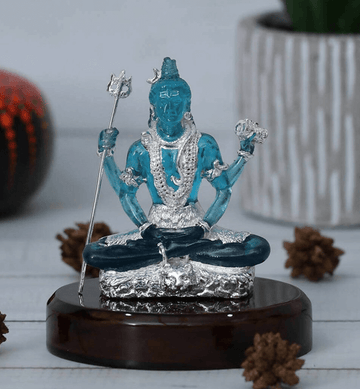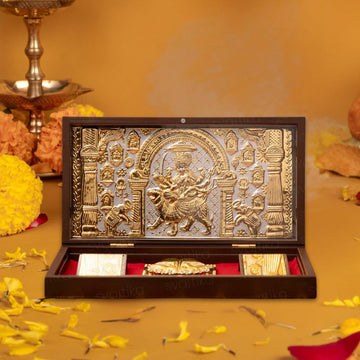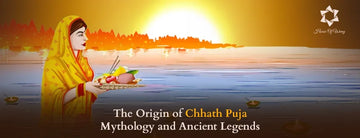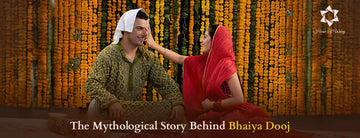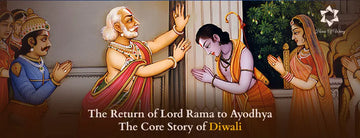Lord Jagannath: The Lord of the Universe and His Eternal Mystique
A timeless force that continues to guide seekers of devotion and cultural identity.
Introduction: The Divine Mystery of Lord Jagannath Idol
Have you ever stood before a God with the awareness that His eyes are not only looking at you, but are seeing beyond space, time, or form? This is the esoterica of Lord Jagannath. For generations, devotees have been mesmerized by His enigmatic form, off-beat rituals, and the inordinate spiritual power that He exudes from His home in Puri. Just who is He? Why does His image not fit with any of our normal forms of idolatry? What makes Jagannath a phenomenon, not a deity?
As many of us are physically, culturally, or spiritually disengaged from our roots, Lord Jagannath provides a unique and eternal linkage back to the soul of India. This blog is a simple effort to describe the immense, multi-layered legacy, symbolic meaning, and spiritual magnetism of the Lord of the universe, Jagannath.
The History and Origin of Lord Jagannath
The history of Jagannath worship arose before written history and merged completely into myth. The Skanda Purana, one of the eighteen Mahapuranas of Hinduism, mentions a form of divinity resting in Nilachal (Blue Mountain). Scholars and saints alike agree that Lord Jagannath is in fact a manifestation of Mahavishnu, and is viewed as the formless taking the form.
Earlier tribal traditions in Odisha, that of the Savaras, involve worship of a wooden figure of Jagannath, which is probably the oldest. Gradually, Sanatan Dharma began absorbing tribal practices, and there was a divine amalgam, a deity going from tribal to Vedic to Vaishnava. This deep fusion laid the foundation for Jagannath culture in Odisha.
The Iconography of Lord Jagannath: The Symbolism of His Form
Lord Jagannath Idol, unlike other Hindu idols, is made of neem wood, has large, round eyes, has no obvious limbs, and has a broad, smiling face. He is incomplete yet absolute. This unique choice of form is not a limitation, but is a profound philosophy.
-
His absence of hands and feet conveys omnipotence; he doesn't need limbs to act.
-
His enormous circular eyes represent infinite perception and unconditional acceptance.
-
The deity’s unfinished form reminds us that the divine cannot be fully captured in physical representation.
Such is the spiritual meaning of Jagannath: He is the Lord who is seen by all, embraces all, and transcends all.
The Unique Rituals of Jagannath Puri Temple
The Jagannath temple significance lies in its ever-evolving rituals, many of which defy traditional norms.
-
Unlike other stone idols, the Lord Jagannath idol is periodically reborn in a ceremony called Nabakalebar. Here, the old idols are buried and new ones carved. It is a rare tradition among Hindu temples.
-
The Mahaprasadam cooked in the temple is prepared in earthen pots stacked on top of each other. Strangely, the top pot cooks first, followed by the lower ones.
-
The Sudarsana Chakra atop the temple appears to face you, no matter where you stand. This is a divine play of geometry and energy.
These rituals, wrapped in mystery, reinforce the mystique of Lord Jagannath and entice millions of followers seeking answers and blessings.
The Ratha Yatra or the Chariot Festival
It is one of the most majestic events of Indian spirituality. It is an act of divine communication. Once a year, Lord Jagannath, Balabhadra, and Subhadra leave the Garbhagriha and ride massive wooden chariots to their temporary abode at Gundicha Temple. They act as a visit to his maternal home. This is the legend of Jagannath Rath Yatra.
The spiritual significance of this event:
- Represents God's willingness to come to His devotees, breaking ritual barriers.
- Embodies the impermanence of the physical temple, reminding us that the true abode of God is the human heart.
- Encourages unity across caste, creed, and class: all devotees, regardless of status, pull the chariot together.
If you witness or even pull the ropes of the chariot, it is considered to wipe away sins and grant liberation.
Relationships in Lord Jagannath: With His two siblings, Balabhadra and Subhadra.
The representation of Jagannath, Balabhadra (Balarama), and Subhadra together is unique within Hindu imagery as divine siblings, freeing us from the constraints of male and female risen gods and dynamic space. They are not consorts, nor attendants; just siblings presenting God in a fresh and intimate way.
-
Balabhadra embodies strength, discipline, and dharma.
-
Subhadra is in the middle and represents Shakti (power) and emotions.
-
Lord Jagannath demonstrates love, compassion, and universality.
These siblings showcase the family model of relationship as a unit of significance, the importance of siblings, and togetherness as a unit of unity. Jagannath worship is made easily relevant, especially to those of us who are away from home and family.
The Significance of Lord Jagannath's Eyes and Body
Let us pause and contemplate. He has eyes, which are open, but never judging, always observing. When He looks upon us, He comforts the weary, gives hope for the lost, and joy for the faithful.
- The Lord Jagannath meaning is beautifully captured in His form. His all-seeing eyes and unfinished wooden body symbolize that He belongs to everyone, and that His divinity defies definition. The spiritual symbolism continues in how He is seen as the Supersoul within all living beings.
- His unfinished black body, arms, and head symbolize the always-present and invisible Vishwarupa, or the universal form, difficult for us to fully comprehend.
Lord Jagannath's Role in Hindu Philosophy
In Vedanta, the Nirguna Brahman (formless) is Jagannath, which appears in Saguna form (with form) just for the sake of the devotees. In Gaudiya Vaishnavism, He is Krishna in his most merciful form when He is willing to embrace even the most fallen soul.
His teaching is not through the scriptures. His presence and his silence are more powerful than what a sermon can say. For a modern seeker, He is an invitation to experience bhakti (devotion) that is boundless and without conditions.
Truly, Hindu deities explained through Jagannath reveal the most profound aspects of devotion and acceptance.
The Pilgrimage to Jagannath Puri: A Journey of Devotion
To step into Puri is to walk into a living tapestry of devotion. The pilgrimage is not just physical but deeply emotional.
- Devotees bathe in the Mahodadhi (Bay of Bengal), purifying body and soul.
- A visit to Nilachala culminates lifetimes of yearning.
- Even a glimpse of the Lord Jagannath idol is believed to liberate the soul from the cycle of birth and death.
This is not just travel, it is homecoming.
The Importance of the Prasadam: The Sacred Offerings of Lord Jagannath
The Mahaprasadam of Jagannath is not merely food; it is divine grace made edible.
-
Prepared in 100+ kitchens by 600+ cooks, the offering is served to lakhs daily.
-
The food never goes to waste, and it is distributed to all, regardless of caste or status.
To partake in this sacred offering is to consume the love of God Himself. At the House of Wemy, we understand the reverence our patrons have for prasadam, which is why many choose our Lord Jagannath idols for their home mandirs so that they may recreate this offering in their daily lives.
Lord Jagannath in Popular Culture and Global Devotion
From temples in London and California to global Ratha Yatras in New York, Berlin, and Sydney, the Lord of Puri has captured hearts across continents.
-
Lord Jagannath stories now live on through ISKCON’s global movement, which places Jagannath at the center of worldwide Krishna consciousness.
-
Artists, musicians, and writers from medieval poets to modern digital creators continue to celebrate His form and philosophy.
Jagannath idols are now cherished across the world as both sacred symbols and cultural bridges.
The Mystique of Lord Jagannath: Unraveling His Enigmatic Presence
Why is he so elusive, so attractive, so unknowable?
Because Lord Jagannath is not meant to be comprehended, but meant to be experienced. In his quiet, he speaks volumes. In his formless form, he reveals the deepest truths of Advaita (non-duality) and Bhakti Yoga.
Astrologically, Puri - the birthplace of Jagannath is ruled by Jupiter, the planet of expansion, knowledge, and devotion. To keep a Lord Jagannath idol at home, particularly in the northeast corner (Ishanya), is supposed to enhance spiritual quality, bring peace, comfort, and bestow divine grace.
Final Thoughts
In a time of distractions, Lord Jagannath offers a connection to eternity. In a time of judgment, His eyes offer acceptance. For marginalized people who want to reconnect culturally, ground spiritually, or find some emotional solace, he offers a passage back home like no other.
What does Lord Jagannath mean to you?
Is he a symbol, a reminder, a tradition, or something visceral and embedded at your core?
At the house of Wemy, we encourage you to take this divine energy back home with you. Browse our collection of handcrafted Lord Jagannath idols for daily use. Each idol is traditionally cultured and ready to be developed into a symbol of modernity. Whether as a gift, as sacred décor, or as your own spiritual ally, he makes sure your home is a temple of peace.

